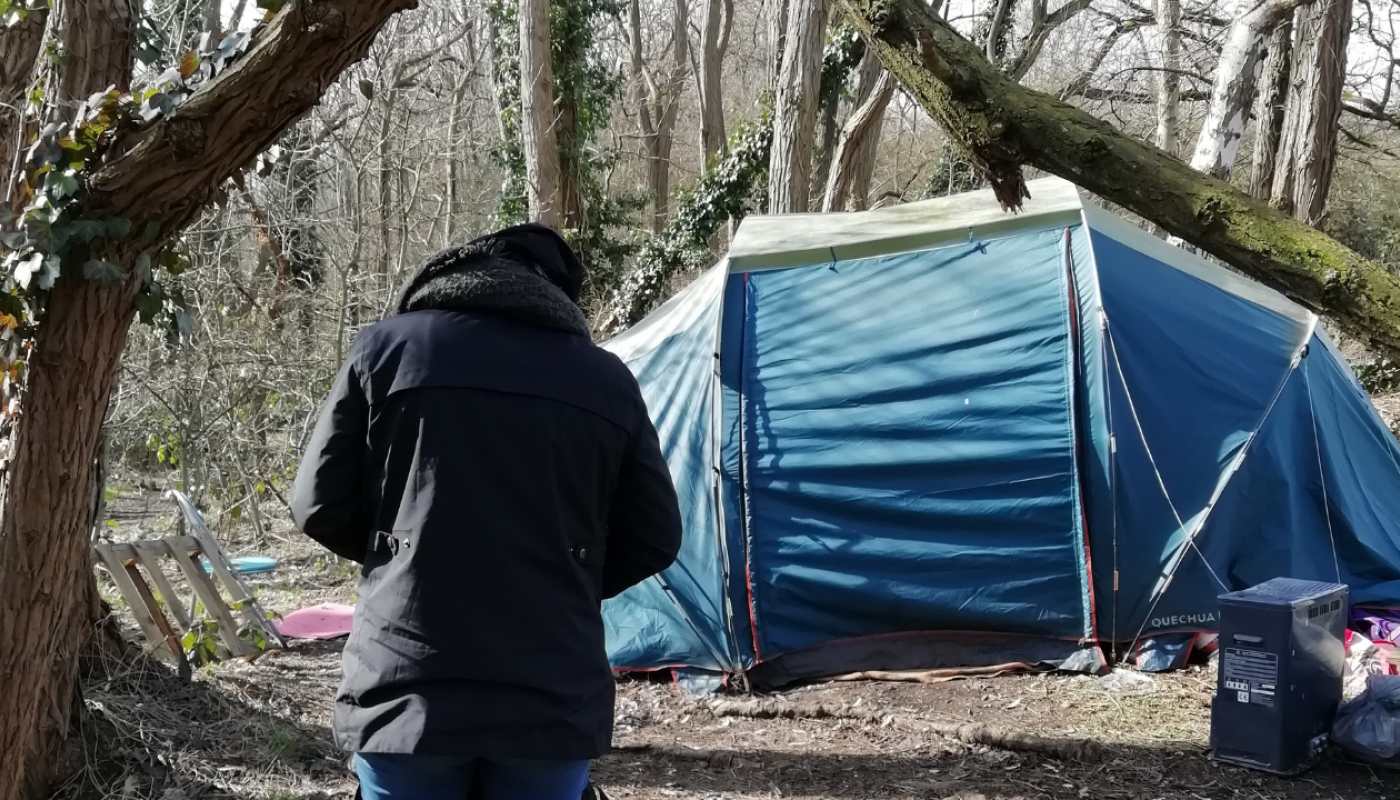I see all sorts of camping spots pop up in Liège.
When I walked past these homeless people before, all sorts of questions went through my mind. I saw them move around, occupy spots here and there, but never to stay. A body in a garage entrance, the movements of someone breathing under a blanket, stuff piled up in a corner, a piece of cardboard under a porch… Clearly visible traces of poverty, but always of a temporary nature.
Those camping spots probably already existed when I started to pay more attention to that poverty. But I only saw them as temporary: clearly visible but leaving few traces. As if this poverty was passing, although we know that it is deeply ingrained and that the people affected by it can live on the street for years.
For some time now, I’ve been looking even more closely to the reality of those camping spots, which pop up, left and right in my town, more or less concealed. I discover places where people are living. Actual dwelling places, where they return every evening, where they spend the day. Some come on their own, others as couples or in a group in several tents. You see all possible combinations. Some are people who have been living on the street for a long time and who decide, in their own way, to settle down. You also see young people do that, with or without papers, with or without future perspective and housing. Mostly without.
Those places where lots of things are going on (sleeping, cooking, eating, hoarding stuff) stirred up a lot of things in my mind. Because having first thought that homeless people keep moving around, I now see them settled in one spot for a certain period.
I wonder what makes people do it. Perhaps it’s a way to create “home” with the little they possess, resigned with the thought: “I go and live on the street for a while”. A way to become visible and/or to create one’s own quiet and protected little space. Some show themselves, others hide. Some revolt, others keep quiet. It’s a bit like to becoming visible in order to disappear.
Everybody makes choices, knowing that in fact there is no such thing.
If someone settles down more or less permanently that does not mean that s/he actually wishes to do so. It’s just another way of living on the street.
I see clothes drying on tree branches and ropes, a garbage can in a corner, a spot for cooking, chairs, tables, pots, food, personal stuff…These places are often barricaded: for protection, for defense, for shelter, for hiding. In short, it’s a life that’s highly questionable.
Can we let these people live in this way without at least showing our support and offering a way out?
Obviously, we make no distinction between our support for people who keep moving and those who have a fixed camping spot.
But whatever the situation, it sickens me.
It’s very difficult to describe the feelings all this stirs up in me. One thing is clear, though: I keep finding it very difficult to accept this permanent poverty that becomes ingrained. These people deserve that we offer them a way out towards a more dignified life, with a roof over their heads – that we help them back on their feet, so that they can rebuild their lives.
In situations like these, I want to get acquainted with these people and discover what they would like to do and achieve – to help them create a safe and sheltered life, however much time that may require.
Moving around or settling in a spot, visible or (almost) invisible, hidden or in view of everybody, hoarding stuff or leaving everything behind, sleeping every night under another porch or in a tent that must constantly be moved, squatting in a place where nobody sees you or staying in a pragmatically arranged camping spot – all these manners of living on the street point to the same reality: poverty that shouldn’t really exist, which society ignores or, all too often, accepts.
I am very fortunate to be able to contribute to giving these people a permanent home again with an organization that commits itself in many ways to put an end to homelessness.
- Estelle, social worker in the Liège section.
(*) We do our utmost to respect the privacy of our patients and our professional secrecy. However, we want to testify to how they must survive and how we are working together to reintegrate them. As a result, the names of places and people are deliberately omitted or changed and real-life situations are placed in a different context. There is no direct link between the photos and the stories above.

